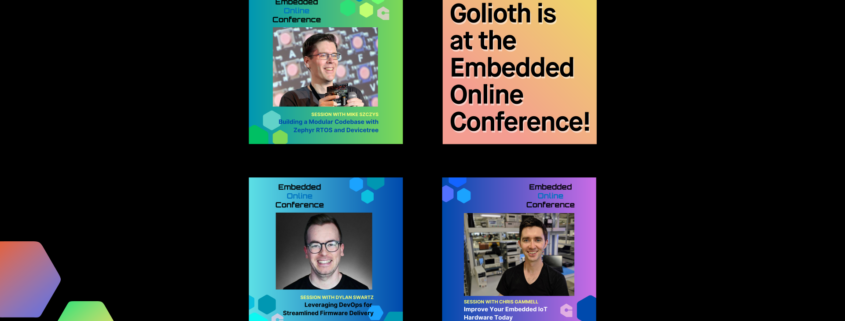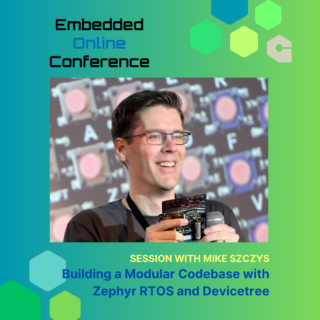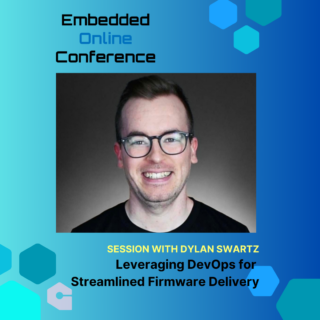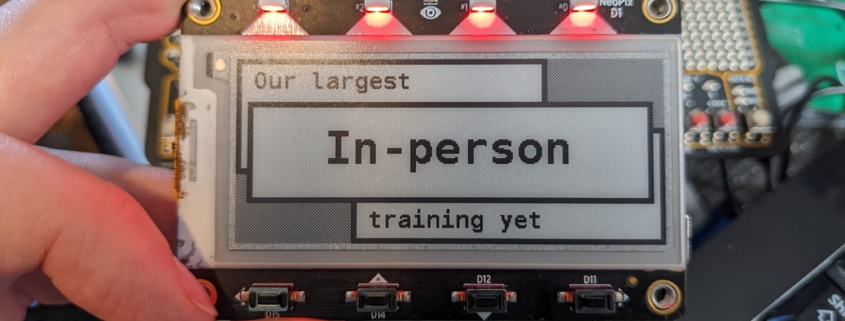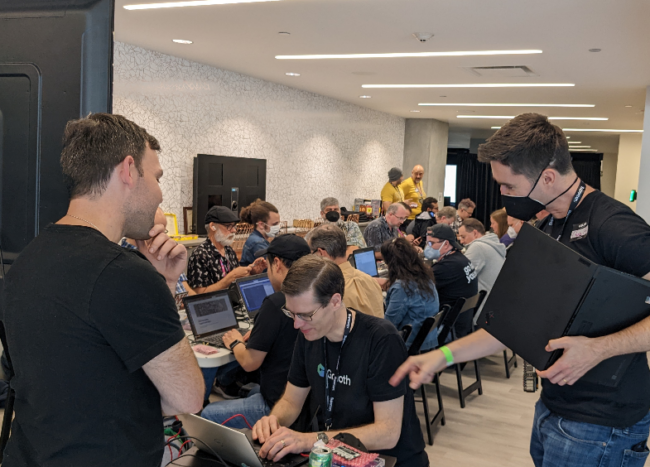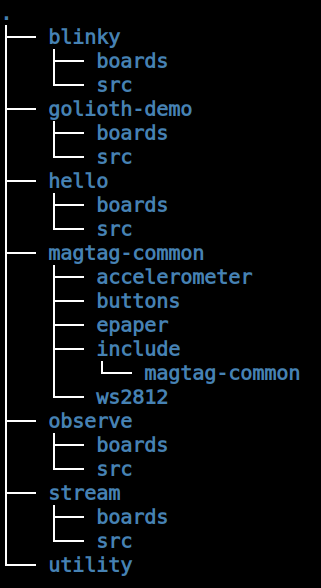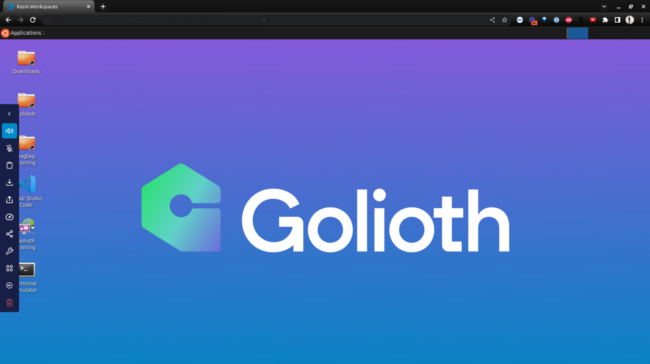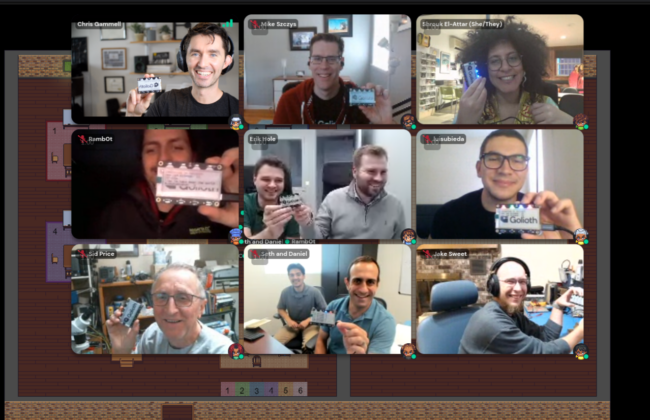How the Golioth Developer Training paved the way
This is a guest post from
Shrouk El-Attar, discussing her journey from the hardware space into the firmware space and how Golioth training has helped her understand building out IoT systems using Zephyr.
The Journey Started with Hardware
To me, hardware just makes sense! You have specific requirements, find a part that can fulfill them, read its datasheet, and then execute. Voila! Successful design achieved.
The worst thing about the process? I don’t know…maybe the Googling? Getting a calculation out by a factor of ten? The tedious BOM stock checking process? These things can be long and tiring, but still, the concepts make sense. Designing a PCB is easy to understand; you follow simple rules and let the copper tracks do the rest. Even things in the “RF Voodoo” territory make sense with well-developed RF design tools these days.
Not too long ago, I finally took the leap into the world of consulting as a self-proclaimed “Hardware Queen”. With that, I saw the terrifying rise in demand for the 2-in-1 engineering consultants: a hardware engineer who is also a firmware engineer.
The Firmware Roadblock
Firmware feels to me like hardware’s anarchist sister. I know her a little; we have some history. It might surprise you to know that she hasn’t always been this way with me.
Once upon a time, there was Arduino (I know, I know). I probably picked up my first Arduino in 2012. I’d heard about them long before then, but as an asylum seeker, I couldn’t afford to own one. That is until the UK officially recognised me as a refugee, and I could finally access higher education and buy my own shiny Arduino.
The first time I got to Blinky on my Arduino, it was like something clicked. I understood it. I understood every single bit of code I was writing on it. “I have a gift,” I thought. Perhaps learning Visual Basic (yup) back in 2007 laid down those basics for me to get to Blinky on Arduino and be a total boss at it.
From then on, I felt invincible. Whatever I could think of, I was able to make it. Self-watering plant? Check. NFC easter egg hunt? Check. Twitter-powered bubble machine? Check. Arduino felt like hardware and software meeting in perfect harmony in a world where anything I could think of was possible.

Shrouk’s Arduino Connected Plant: Light data is sent to cloud platform (left), phone notifications are sent when light data is critical (middle), plant “tweets” when light data reaches below a certain level (right).
My initial success was a sign I was going to be a firmware engineer. But soon after, my firmware dreams were shattered.
Stuck in the Firmware Valley
My first full-time engineering role was at Intel back in 2015, where I specialized in the then-brand-new field called IoT. “Can you imagine that by 2020 there will be 50 billion connected devices?” I thought to myself. I was so excited that I would be one of the people developing those devices. It was the future.
One of the first things I couldn’t wait to get my hands on was the all-shiny Intel Realsense 3D Camera. But when I downloaded my SDK, I didn’t know where to start. After days of struggling on my own, I could get some things working with the help of my senior colleagues. But none of it clicked. I had no idea what I was doing. I was not gifted. Frankly, I sucked at firmware.
I started specializing in hardware. As the years passed, some of my all-time favorite chips became the nRF5 MCUs by Nordic Semiconductor. What a hardware engineer’s dream. Can’t get to a specific pin during routing? Don’t worry; choose literally any other pin you can reach more easily, and re-route there! The nRF5 had an excellent reputation amongst my firmware colleagues too.
In 2019, I decided to give firmware another go on my favorite chip. I wasn’t too far down the toolchain setup, and I’d already started regretting it. What the heck were Make files?! It was an excruciating process. But–no exaggeration–one week later, I’d managed to set up the toolchain. Great, let’s get to Blinky! Save, build, flash. Error.
I spent hours, then finally figure out the error. Save, build, flash—another error. Repeat a zillion times. It turns out I had never set up the toolchain correctly in the first place. Months later, I finally found a training that would work, or so I thought. This turned out to be my biggest disappointment. Nothing in the training was up to date. Nothing worked the way it was supposed to. This was indeed the final time I’d try to touch firmware again. I was stuck. I was done.
The Golioth Way
Back in present day, as I was realizing the demand for the 2-in-1 hardware and firmware engineering consultant, a well timed post from Chris Gammell appeared on my feed. The post was about the Golioth Developer Training, targeted explicitly at hardware engineers. The 2-in-1 engineer could be me. Was I going to try firmware again? Absolutely.
The training took place entirely remotely with hardware engineers from all over the world. This is going to be it, for sure! But, from the very beginning, I was already struggling. “Here we go again”, I thought. I shouldn’t have thought I could do it. I struggled with minor details at first, like appending -d instead of -D to a build command, which apparently gives wildly different results. I copied and pasted the correct information but in the wrong fields. And each exercise took me way longer than the “estimated time” suggested for each section.
The training happened in a large group, but we did the exercises independently. Chris and Mike were checking in on each of us throughout, so they were able to help me fix anything I missed very quickly on a one-to-one basis. As the training went on, I started to notice that I needed their help less and less. What is this I feel? Some cautious optimism, perhaps?
The training method was active. I wasn’t sitting at my desk blindly following instructions. No, I was pushed to figure out the correct way to solve a problem at every stage. It was presented in bite-size information with many collapsed sections. The training also included links referencing concepts, e.g. Zephyr Pin Control, throughout, should I want to learn more. For the most part, I didn’t click those because I wanted to stay on track. My head was already full of too much firmware to learn. But I enjoyed that they were there so I could refer back to them in the future.
Then the happiest of accidents happened. I picked up a later stage of the training on my own, then realized that I had to redo the earlier parts to get to where I wanted to pick up from. Not going to lie; I was slightly annoyed. But while re-doing them, I saw that it wasn’t taking me very long at all. This time, I was well within the time estimates suggested for each exercise, if not much quicker. Was this working for me? Did I finally find a method to learn commercially viable firmware that works?
A light bulb went off when I realized that it took me over a week to get to Blinky on my previous firmware training, but within a couple of hours, I was already speaking to my Wi-Fi device through the Golioth Console. Not only that, but it was all through the Zephyr RTOS with Golioth. The same Zephyr RTOS I struggled endlessly with on the nRF5 hardware that I love. It was a miracle to think about being enabled for firmware on my favorite hardware platform. Coupled with the fact that Golioth is entirely scalable, i.e. the idea that I can start from an idea to production on the same platform, made Golioth a dream.
Golioth also helped me develop a community, some of whom I became close Discord friends with. We all need a Discord buddy to complain to about daily life as an electronics engineering consultant (Hi Seth!). And a decade after I picked up my first Arduino, Golioth Developer Training helped me finally break through that commercially viable firmware ceiling.
Next, I’ll work on reference designs and put the skills I learnt from the training to the test. Watch this space.
Editor note: If you’re interested in taking part as an individual or as a company, sign up for future training here.


